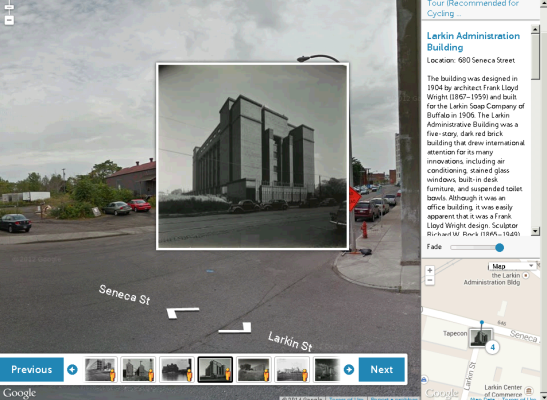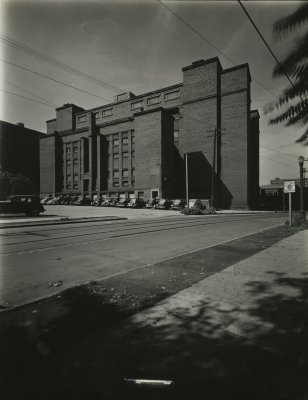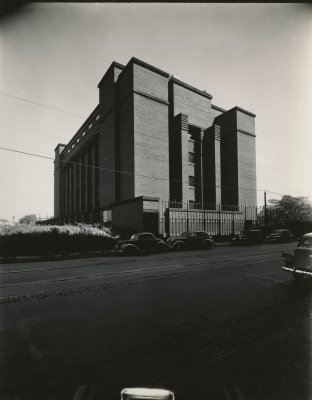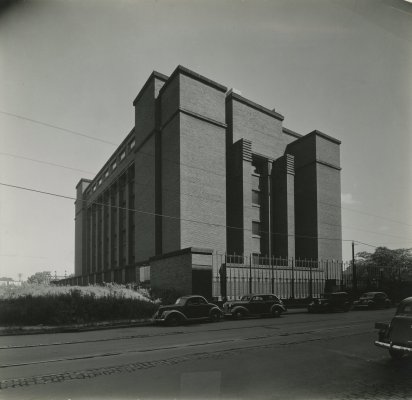The Larkin Administration Building, formerly located at 680 Seneca Street, was designed in 1904 by architect Frank Lloyd Wright (1867–1959) and built for the Larkin Soap Company of Buffalo in 1906.
It was a five-story, dark red brick building that drew international attention for its many innovations, including air conditioning, stained glass windows, metal built-in desk furniture, and suspended toilet bowls. Although it was an office building, it was easily apparent that it was a Frank Lloyd Wright design. Sculptor Richard W. Bock (1865–1949) provided the ornamental globes on the tops of the central exterior piers of the building.
The Larkin Soap Company was founded in Buffalo in 1875 by John D. Larkin (1845–1926). The company would later expand into manufacturing other items, including groceries, dry goods, china, and furniture. The company became a national pioneer of the mail-order business model, with branches in Buffalo, New York, and Chicago. After failing to recover from the Great Depression, the company went into bankruptcy in 1943.
The City of Buffalo sold the building to the Western Trading Corporation in 1949 and, despite local and national protests, the architectural marvel was destroyed. Demolition of the Larkin Administration Building by the Morris and Reimann wrecking company took six months to complete. The demolition process took a very long time due to the fact that the building was built to last forever. Questions still remain today as to why it was torn down. The only part of the building that remains is a single brick pier along a railroad embankment.



